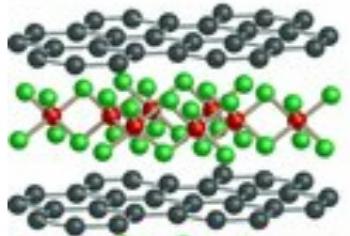GO membranes' stability in water finally explained
Researchers at Northwestern University managed to explain a previously puzzling conundrum regarding graphene oxide membranes' water solubility. Since graphene sheets become negatively charged in water, they should logically repel each other (which will ruin the membrane). In reality, water seem to do the opposite and stabilize the membrane, which remained inexplicable until recently.
The researchers tested different graphene oxide membranes and discovered that the purest one did, in fact, disintegrate in water as expected. They found that an aluminium preparation filter corrodes slightly in the acidic solution that is used for membrane preparation. The positive aluminium ions released bind to the charged graphene oxide sheets and stabilize them. Other metal ions from the production process can also cause the same effect.


